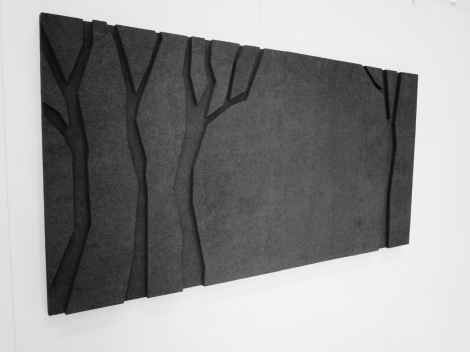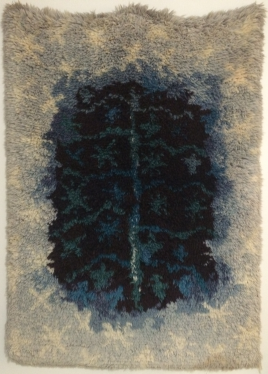You just spent thousands on high quality audio interface and speakers for your home studio or living room. When they finally arrive, you can't wait to plug them in and try them out. You play a familiar track and expect that all of its mysteries to reveal to you. Then it hits you. Instead of the crystal clarity you experienced while testing them in the shop, you get boomy low-end and mushy highs.
The Complete Chain
 Finnish Innofusor.fi is one place where you can find eye pleasing
acoustic elements. However, they don't come cheap.
Finnish Innofusor.fi is one place where you can find eye pleasing
acoustic elements. However, they don't come cheap.
Probably many of you have struggled with non-optimal room acoustics at some point. It's not something you didn't know about already, there are many websites that rant about the importance of room acoustics. And they are right. It doesn't matter if you have the most expensive high-end gear out there if your room acoustics suck. The weakest link in your audio chain determines the quality of the perceived sound. The full path from audio format to audio card to speakers to your ears has to be considered. Having a high quality chain up to the speakers is the easy part. It is basically determined by how much you are willing to spend, it's quite easy to find the best available gear by reading reviews. But unless your listening space was designed with acoustics in mind from the start, the end of the chain will be a challenge. Yes, there are plenty of acoustic elements like absorbers, resonators and diffusers that you can buy. But this requires A). a lot of money, B). professional knowledge and planning. You can't just buy something and stick it into some corner. Or you can but then the resulting improvement ranges from nonexistent to minor.
The Better Half Aspect
Of course, there are other aspects to using the acoustic elements as well. You might be sharing your music space with someone. Maybe she/he is not happy when you stick charcoal-color foam all over the living room. It is very frustrating to try to convince someone about the importance of the matter when the someone is satisfied when listening 96 kbps mp3 with laptop speakers... Before you start a major confrontation or spend large amounts to get acoustical elements that are as pleasing to the eyes as they are to the ears, you should consider following alternatives.
It is easily forgotten that basically everything in a room affects the acoustics. Carpets, curtains, couches, tables, and chairs modify how the audio waves are moving in a room. You can improve the room acoustics to some extend just by keeping this in mind when selecting your furniture. Without going too much into the technical details, I'll list some key points.
- The thicker/bigger an object is the lower frequencies it affects
- Soft objects absorb
- Hard and flat surfaces reflect
- Hard and uneven objects diffuse
- Hollow objects act as resonators
Do's and Don'ts
 A wall rug functions well as an absorber for high
frequencies.
A wall rug functions well as an absorber for high
frequencies.
First of all, try to keep the room as symmetric as possible so that the stereo image is preserved. Generally you want to have some absorption on all frequencies to limit the time that an audio wave is bouncing, or echoing, in the room. High frequency echoes can be damped with carpets and curtains. I have found a wall rug to be a good alternative to acoustic panel; it is usually both cheaper and more eye pleasing, while having pretty good absorption capability. Bigger objects, like a couch, dampen also lower frequencies. A couch is partially an absorber and partially a resonator, which means that it will likely have some low frequency range it affects more than others. Flat and hard surfaces, such as metal or glass tables, should be avoided as they just reflect the audio wave and can thus distort the acoustic space or vibrate and cause unwanted tones at certain frequencies. However, if a hard surface has an uneven texture it might actually be a good thing as it diffuses (spreads the reflected energy). Adding too much absorbtion can make the room sound dull and dead. A diffusor can be used instead of an absorber to soften the reflections without adding absorbtion. A bookcase full of books has quite nice acoustical properties, it diffuses and has some absorbtion. Also, it affects a broad range of frequencies due to its large size.
The high-frequency echoes are typically easier to control than the low-frequency echoes. You can find a balance in the amount of high frequency absorption through experimentation. A rule of thumb is that if you clap your hands, the echoes should not last much more than 0.5 seconds. The low frequencies are more problematic, as they are concentrated on a specific set of frequencies which depend on the dimensions of the room. This means that you need a correctly sized resonator to dampen a selected frequency range, which in turn requires DIY spirit or deep wallet. Alternatively, you can utilize a software EQ to tame the low frequencies. But that's a subject for another post.
 Viremusic
Viremusic